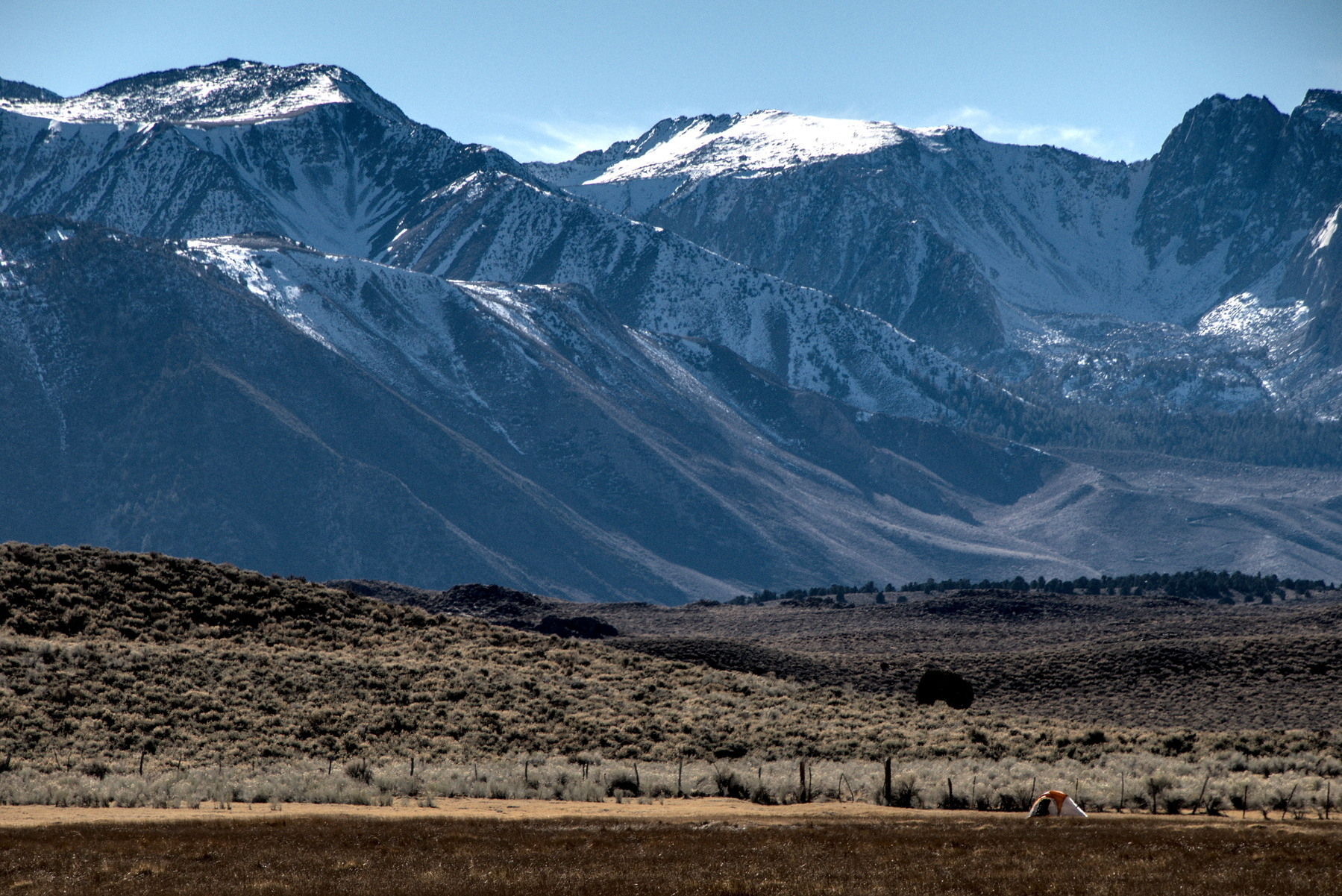Rain Shadow, The Other Great Divide
Normally, a great divide is a drainage divide, the peak of a mountain range where water on either side flows into different drainages. In the Eastern Sierra Nevada, the prominent feature is the divide between mountains and high desert, a change in climate known as a rain shadow.
The predominant winds are from the west, bring warm and wet ocean air. As that air is forced up and over the high peaks, it cools and condenses the moisture into rain or snow. If there is any moisture left as it makes its descent, it runs into the hot, dry air of the Great Basin and Range, which stretches from here to western Colorado.
Basin and Range. It sounds musical. To geologists, it has specific meanings that I wasn’t aware of until I lived here. Geographically, a basin is a valley with no outflow. Mostly, these form lakes, but in the rain shadow, they are just sandy valleys, mostly devoid of water. The mountain ranges that separate the basins are raw rock, layered, tilted, barren.
The high Sierra is barren in its own way, freshly cut granite with little soil, but the altitude and water make for a wildly different environment.
This photo shows the divide. Snow and evergreens above. Great basin sage and bitterbrush below.
